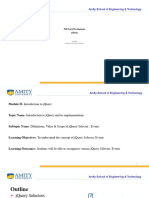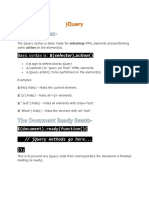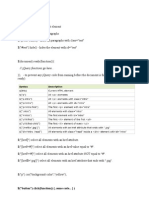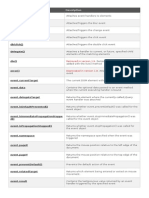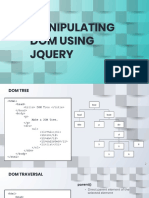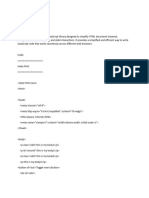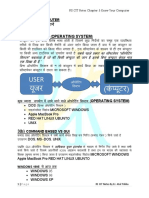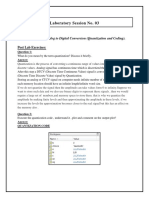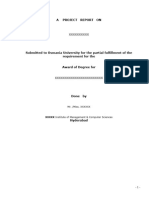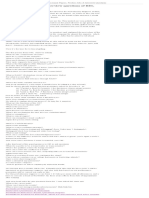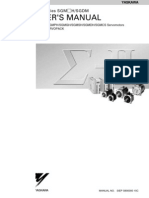0% found this document useful (0 votes)
52 views27 pages1 - Jquery Event Methods - 3
The document provides an overview of jQuery event methods, explaining what events are and how they can be utilized in web development. It covers various event types such as mouse, keyboard, and form events, along with examples of jQuery syntax for handling these events. Additionally, it discusses specific methods like click(), dblclick(), focus(), and others, demonstrating how to attach event handlers and manipulate elements based on user interactions.
Uploaded by
Mani BaluchamyCopyright
© © All Rights Reserved
We take content rights seriously. If you suspect this is your content, claim it here.
Available Formats
Download as PDF, TXT or read online on Scribd
0% found this document useful (0 votes)
52 views27 pages1 - Jquery Event Methods - 3
The document provides an overview of jQuery event methods, explaining what events are and how they can be utilized in web development. It covers various event types such as mouse, keyboard, and form events, along with examples of jQuery syntax for handling these events. Additionally, it discusses specific methods like click(), dblclick(), focus(), and others, demonstrating how to attach event handlers and manipulate elements based on user interactions.
Uploaded by
Mani BaluchamyCopyright
© © All Rights Reserved
We take content rights seriously. If you suspect this is your content, claim it here.
Available Formats
Download as PDF, TXT or read online on Scribd
/ 27
